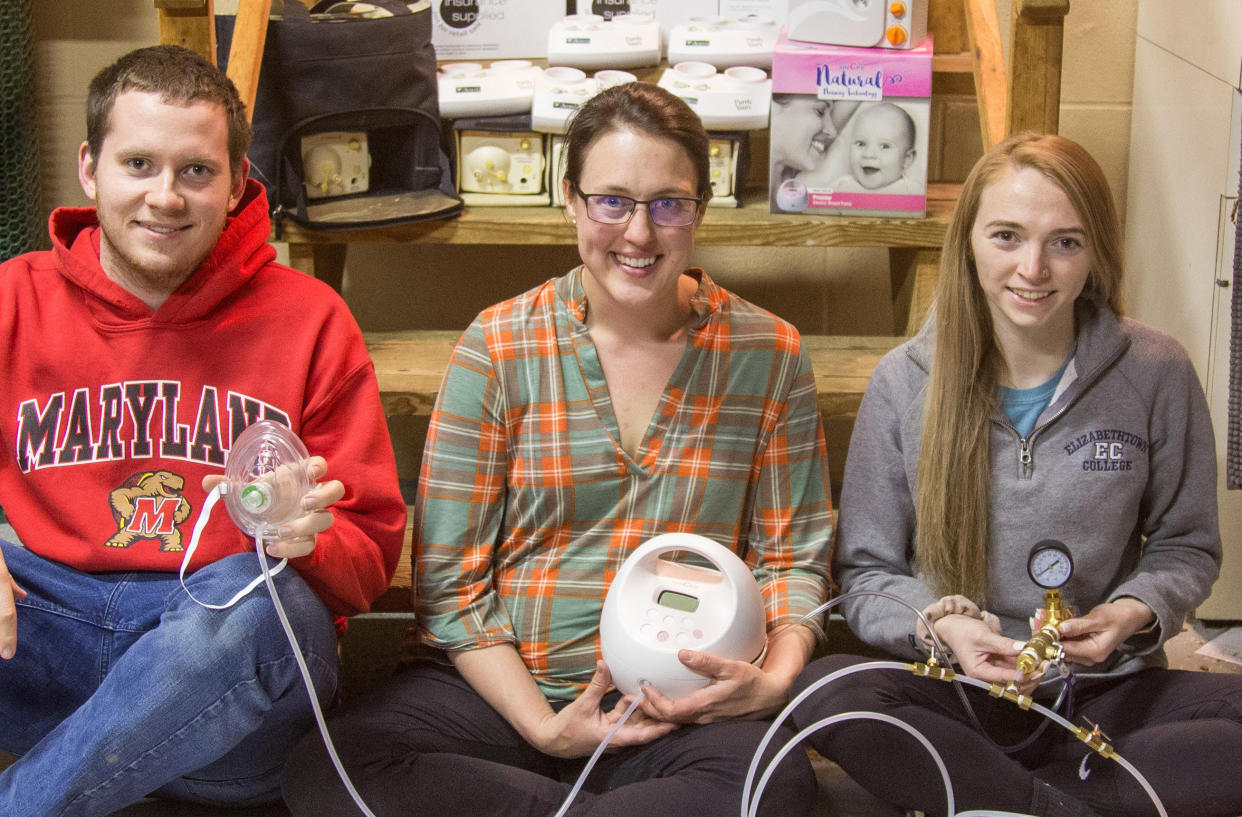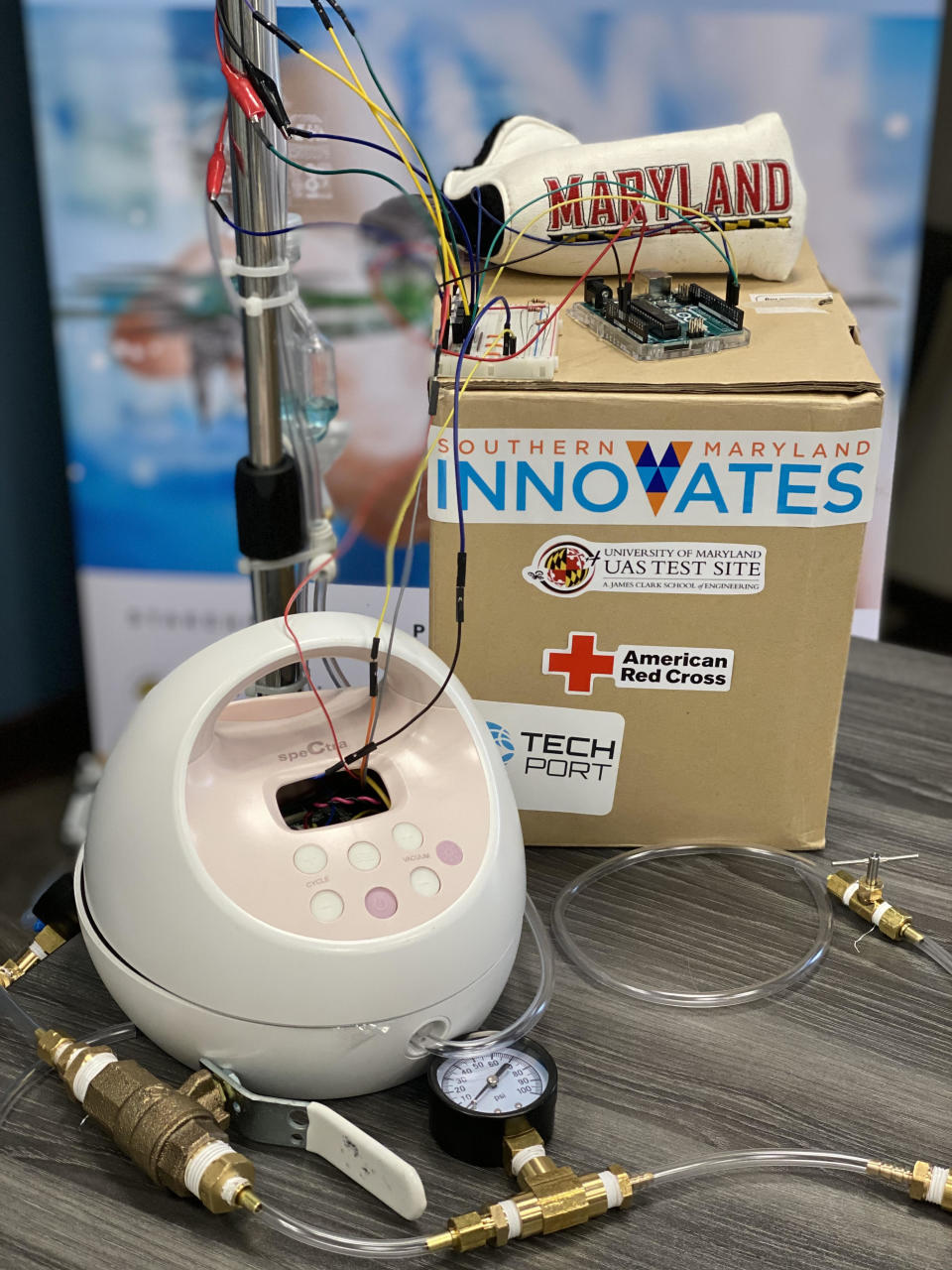Engineers say 'incredible' mothers are donating breast pumps to use as coronavirus ventilators

U.S. hospitals are desperate to obtain ventilators for coronavirus patients who have developed acute respiratory distress syndrome (ARDS) — a cruel outcome in the COVID-19 fight. To shore up the country’s ventilator supply, some doctors are now remodeling sleep apnea machines “as an absolute last resort,” which could allow two patients to share one ventilator. However, engineers in Maryland have a cheaper substitute for the breathing machines: Breast pumps.
The concept materialized when engineer Brandi Gerstner found a $200 Spectra breast pump in her basement. “[A breast pump] does pulsing intervals. It is a sanitize-able biomedical device that's approved by the [FDA]...You know they're reliable, they’ve been used by moms everywhere for decades. What if I could reverse it?” Brandi told Southern Maryland news outlet The Bay Net. “What if I could make it blow rather than suck? And so I grabbed my old one from the basement, grabbed a screwdriver and an X-Acto knife… Sure enough, you can turn it around very, very easily.”
Electric breast pumps suction breast milk from the mother into a container using a motor with adjustable speeds, whereas ventilators deliver oxygen to a person’s lungs with a tube inserted through the mouth or nose and into the windpipe.

By reversing two little valves, the engineering team — Brandi and Grant Gerstner, Alex Scott and Rachel LaBatt — are turning the negative-pressure breast pump (one that draws out fluid) into an “intermittent positive pressure ventilation” machine that blows air.
“We can bypass the circuit board of the breast pump to control the exhale-to-inhale ratio, the volume of air and the respiratory rate,” LaBatt, 24, tells Yahoo Lifestyle. “We basically want the device to listen to our circuit board.”
The goal is approval from the Food and Drug Administration (FDA), which in March enacted an Emergency Use Authorization to allow “positive pressure breathing devices modified for use as ventilators.” Until then, the engineers are consulting with pulmonologists, respiratory therapists and other experts to understand the required specs to ventilate patients based on their distinct physiological needs.
“We’re using donated breast pumps to bring down costs and readily-available parts so we’re not contributing to the ventilator shortage,” LaBatt tells Yahoo Lifestyle.
It takes four hours to create a $300 prototype (ventilators can range from $25,000 to $50,000) using donations through the Facebook page Rapidly Deployable Breast Pump Ventilator to Combat Coronavirus. Back in March, the Maryland community donated 27 breast pumps in just 48 hours and 30 more were provided on Tuesday.
LaBatt tells Yahoo Lifestyle that women in Washington D.C., Virginia and Maryland are voluntarily organizing donation drop-off spots, then driving the pumps over to the laboratory.
“A mother recently told me that she is ‘lucky to help millions in crisis’ and that made me tear up,” says LaBatt. “These women spent so many long hours with their pumps, and now are helping. Mothers are incredible.”
For the latest coronavirus news and updates, follow along at https://news.yahoo.com/coronavirus. According to experts, people over 60 and those who are immunocompromised continue to be the most at risk. If you have questions, please reference the CDC and WHO’s resource guides.
How to maintain your physical and mental health during the pandemic
Taking care of a loved one with COVID-19? Here’s how to stay healthy
Q&A with Dr. Kavita Patel: How to keep your family safe and maintain your mental health
Read more from Yahoo Lifestyle:
Doctor brings joy with viral dance videos: 'I can show you that we're in this together'
Want daily pop culture news delivered to your inbox? Sign up here for Yahoo Entertainment & Lifestyle's newsletter.

